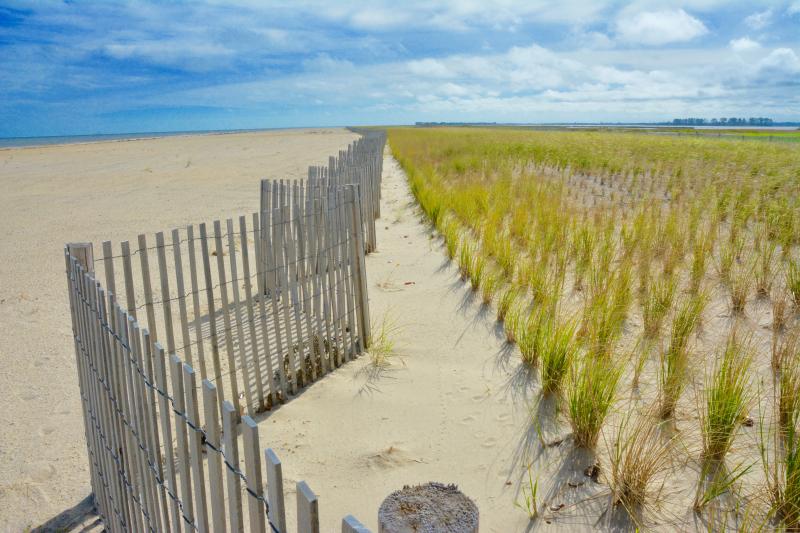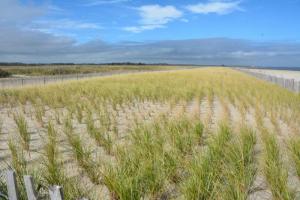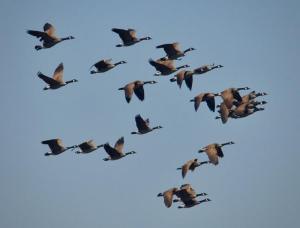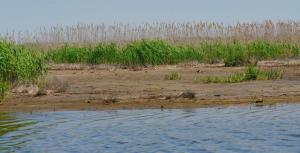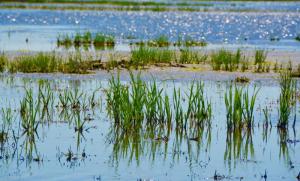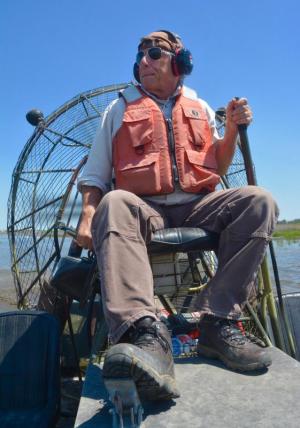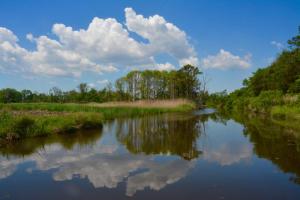Prime Hook beach restoration among top projects in U.S.
Prime Hook National Wildlife Refuge beach has been named one of the five best restored beaches in the nation for 2017 by the American Shore and Beach Preservation Association.
A year-long, $38 million project to restore the beach shoreline – which includes Fowler Beach – and marsh in the refuge was completed last fall. Since then, refuge officials have been waiting and watching for Mother Nature to bring more than 1,000 acres of destroyed marsh back to life. The project was one of the largest marsh restoration projects ever attempted on the East Coast.
And it's working beyond refuge officials' expectations. “This is becoming a huge, great success story,” says Annabella Larsen, wildlife biologist at the refuge.
Key to the project – and the first work done – was filling in several wide breaches in the barrier beach dune line that allowed for the free flow of saltwater from Delaware Bay into the marsh.
As part of the project:
• Four substantial breaches have been filled in, and nearly 2 miles of shoreline have been replenished with 1.4 million cubic yards of Delaware Bay sand.
• The dune has been restored to a height of 9 feet with a 100- to 600-foot-wide back barrier platform between the dune line and marsh.
• More than 500,000 plugs of beach grass and 10,000 feet of fencing have been added to stabilize the dune and back barrier.
The beach is not a seawall, said Al Rizzo, project leader for the Coastal Delaware National Wildlife Refuge Complex, which also includes Bombay Hook refuge. “It was built wide and low to allow overwash to happen,” he said.
Rizzo said the new beach profile allows tidal surges to roll over the beach and dune. The replenished back barrier along the dune line protects both the beach and the dune.
Damage to the refuge took place over several years, aggravated by a series of storms. Those storms opened several breaches along the shoreline, which allowed for the free flow of saltwater into freshwater marsh. Thousands of acres of what used to be freshwater marsh were changed to open water, drowning out marsh plants.
Restoration work was concentrated in the Unit 2 and Unit 3 impoundments. The refuge is organized into four units, which are bounded to the north by Fowler Beach Road and to the south by Route 16. The two units include more than 5,000 acres of the 10,144-acre refuge.
Piping plovers return for second year
Fowler Beach is off limits because piping plovers have returned for the second year in a row. This year four nests have been established. “In the history of the refuge, we've never had piping plovers,” Larsen said.
Also for the second year, the refuge has large numbers of spawning horseshoe crabs coming onto the beach this month.
In addition, there are two American Oystercatcher nests on the beach and an active Least Tern colony, the only one in the state. Larsen said the wide beach profile and the coarse sand with pea stones used in the replenishment are a mecca for birds and horseshoe crabs.
She said refuge officials anticipated this type of activity on the beach in three to five years, not during the first and second years.
The beach will be closed until early September, Larsen said.
Rizzo is quick to point out that wildlife is the top priority at the refuge. “The restoration was done for wildlife and not for recreation. We have a mandate that wildlife is first and foremost,” he said.
That doesn't mean that people are not welcome at Prime Hook, he said. The refuge offers trails, birdwatching and photography opportunities, and kayaking and canoeing.
“I know people want to see the beach, but we can't open it with endangered and threatened species nesting there,” he said.
Vegetation is growing back in refuge
Channels were dredged out and water-control structures were removed to improve tidal flow in the refuge. “We are getting more sediment that allows the marsh to keep up with predicted sea-level rise,” Larsen said.
Refuge officials said it will take five to eight years for vegetation to recover in areas that are open water. And it's already happening throughout the refuge. Some areas were planted with spartina grass and other areas are growing back naturally. “We are seeing island areas starting to spread out,” Rizzo said.
Rizzo said even with a replenished beach and restored marsh, the clock is ticking on the fate of Prime Hook refuge. He said models showing as much as 1.5 feet of sea-level rise over the next 30 years would in all likelihood decimate coastal areas, including the refuge. “We won't be here forever,” he said. “We are shooting for 30 more years, and hopefully we'll be able to buy a little more time.”
Association President Tony Pratt – who is the Delaware Department of Natural Resources and Environmental Control's administrator of the Shoreline and Waterways Management Section – said many of America's most heavily used beaches have been restored.
“For more than 50 years, beach restoration has been the preferred method of shore protection in coastal communities,” Pratt said.
The other winners included Dauphin Island, Ala.; Phipps Ocean Park Beach in Palm Beach, Fla.; Popponesset Spit Barrier Beach in Mashpee, Mass; and Sandbridge Beach in Virginia Beach, Va. In all, more than 10.5 million cubic yards of sand were pumped on nearly 9 miles of beachfront in the five projects.











